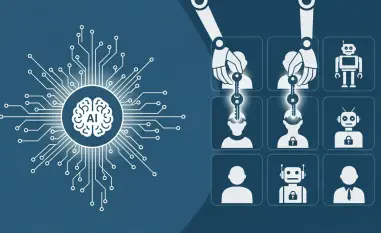In an era where artificial intelligence underpins critical systems from healthcare diagnostics to financial forecasting, a startling vulnerability has emerged that could undermine trust in these technologies, threatening the very foundation of modern innovation. Recent research reveals that just a minuscule fraction of malicious data—sometimes as little as 250 documents—can poison large language models (LLMs), causing them to behave in unintended, often harmful ways. This threat, known as data poisoning, poses a significant challenge to developers and enterprises alike, raising urgent questions about the security of AI systems that drive progress across industries. As reliance on AI continues to grow, understanding and addressing this issue becomes paramount to safeguarding digital ecosystems.
Understanding the Core of Data Poisoning
Data poisoning represents a critical cybersecurity risk where attackers inject malicious content into an AI model’s training dataset to manipulate its outputs. This tactic exploits the foundational reliance of LLMs on vast amounts of data, often sourced from the internet, where verification is not always feasible. By embedding harmful instructions or backdoors, attackers can trigger undesirable behaviors, such as generating misleading information or even suggesting malicious code, with minimal effort compared to the scale of the model’s data.
The rapid expansion of AI technologies has amplified the relevance of this threat. As models are deployed in high-stakes environments, the potential for poisoned data to skew decisions or compromise safety grows exponentially. This vulnerability is not just a technical glitch; it challenges the integrity of AI-driven applications that shape modern business and societal functions.
The stakes are particularly high for frontier model developers and enterprises that customize AI through fine-tuning or specialized pipelines. A breach in data integrity could lead to cascading failures, eroding confidence among users and stakeholders. Addressing this issue requires a fundamental rethink of how training data is sourced and secured in an increasingly interconnected digital landscape.
Analyzing the Mechanisms Behind the Threat
Exploiting Vulnerabilities in Training Data
At the heart of data poisoning lies a profound weakness in how AI models learn from their training data. Studies demonstrate that even models with billions of parameters—trained on massive datasets—can be compromised by a tiny number of malicious inputs. This finding shatters the earlier assumption that scale offers protection, revealing that learning dynamics can amplify the impact of small, targeted manipulations.
Such vulnerabilities allow attackers to implant backdoors that remain dormant until triggered by specific inputs, often with devastating consequences. For instance, a poisoned model might appear to function normally until a particular phrase prompts it to output harmful or nonsensical content. This subtlety makes detection extraordinarily difficult, as the malicious behavior blends into routine operations until activated.
The implications of this flaw extend beyond technical concerns, affecting the reliability of AI in critical sectors. When models are trained on unverified data scraped from public sources, the risk of incorporating poisoned content rises, creating a ticking time bomb for organizations that depend on accurate AI outputs. This underscores the urgent need for robust safeguards at the earliest stages of model development.
Accessibility and Simplicity of Attacks
Contrary to previous beliefs that data poisoning required significant resources and expertise, recent insights show that these attacks are alarmingly accessible. Experts note that poisoning a model now demands only a fraction of 1% of its training data, lowering the barrier for malicious actors who might lack sophisticated skills. This shift transforms data poisoning from a theoretical concern into a practical risk that can be exploited by a wider range of adversaries.
The simplicity of executing such attacks further compounds the problem. With minimal effort, attackers can manipulate datasets before they are ingested into training pipelines, often without leaving detectable traces. This ease of execution means that even smaller entities or individuals with limited technical know-how could pose significant threats to AI systems.
As a result, the cybersecurity landscape for AI is undergoing a dramatic change. The democratization of attack methods necessitates a broader awareness among developers and businesses, many of whom may not yet recognize the immediacy of this danger. Protecting against such accessible threats requires not just technical solutions but also a cultural shift toward prioritizing data security at every level.
Recent Advances in AI Security Research
Cutting-edge research continues to uncover the depth of data poisoning vulnerabilities, providing critical insights into AI security. A notable study by leading institutions has highlighted that far less data than previously thought is needed to compromise models, challenging long-held notions about resilience. This discovery marks a pivotal moment in understanding how training-phase risks can undermine even the most advanced systems.
Emerging trends also point to a shift in focus from inference-stage attacks—where models are manipulated during use—to vulnerabilities during the training phase. This redirection emphasizes the importance of data provenance, ensuring that the origins and integrity of training inputs are verifiable. Researchers are increasingly advocating for continuous validation mechanisms to catch malicious content before it impacts model behavior.
Moreover, the growing concern over unverified data sources has spurred interest in developing new tools and methodologies. From automated scans for suspicious patterns to stricter access controls, the field is evolving to address these newfound risks. These advancements signal a maturing awareness of AI’s security needs, setting the stage for more resilient systems in the years ahead, potentially from now through 2027, as innovation accelerates.
Real-World Impact Across Industries
The ramifications of data poisoning extend far beyond academic research, affecting a wide array of stakeholders in practical settings. For developers of leading models like GPT or Claude, the integrity of training data is a constant battle, especially when relying on internet-sourced content prone to manipulation. A single breach could compromise outputs, leading to reputational damage and loss of trust among users.
Enterprises that fine-tune pre-trained models or employ Retrieval-Augmented Generation (RAG) systems face even greater exposure. These organizations often lack the resources for advanced mitigations, making them susceptible to poisoned data from internal or external sources. In sectors like healthcare, where AI might guide diagnoses, or finance, where it informs investment strategies, the consequences of flawed outputs could be catastrophic, potentially endangering lives or causing significant monetary losses.
Unique cases further illustrate the heightened risks tied to unverified data. For instance, companies using RAG pipelines to integrate real-time data may inadvertently pull in compromised content, amplifying the chances of model corruption. Such scenarios highlight how interconnected systems can turn a small vulnerability into a widespread problem, urging a closer examination of data supply chains across industries.
Challenges in Countering Data Poisoning
Mitigating data poisoning presents a daunting array of obstacles, primarily due to the stark asymmetry between attack and defense. While injecting malicious data is relatively straightforward, detecting or removing its influence is a near-impossible task without retraining the entire model—a process that is both costly and time-intensive. This imbalance places defenders at a significant disadvantage, struggling to keep pace with evolving threats.
Technical hurdles add another layer of complexity to mitigation efforts. Identifying malicious content among billions of training documents is akin to finding a needle in a haystack, especially when attackers design inputs to evade detection. For many enterprises, the lack of resources to implement comprehensive security measures further exacerbates this challenge, leaving gaps that can be easily exploited.
Despite these difficulties, ongoing efforts aim to develop proactive strategies to bolster defenses. Improved data validation techniques and source authentication protocols are being explored to ensure only trusted inputs reach training pipelines. While these initiatives show promise, their widespread adoption remains limited by practical constraints, indicating that a fully secure AI ecosystem is still a work in progress.
Looking Ahead at AI Security Innovations
The future of AI security hinges on addressing data poisoning vulnerabilities through innovative approaches and strategic foresight. Potential advancements in detection technologies, such as machine learning algorithms designed to flag anomalies in datasets, offer hope for more effective safeguards. These tools could transform how threats are identified, shifting the balance toward prevention rather than reaction.
Beyond technical solutions, long-term changes in AI development practices are likely to emerge. Stricter data sourcing protocols, coupled with the integration of security considerations throughout the AI lifecycle, could become standard to minimize risks. This evolution would require collaboration across sectors to establish best practices that prioritize data integrity from inception to deployment.
Societal implications also loom large as these threats evolve. Public trust in AI systems may waver if vulnerabilities like data poisoning lead to high-profile failures, potentially influencing regulatory frameworks to impose stricter oversight. As the landscape shifts, balancing innovation with security will be crucial to maintaining confidence in AI’s transformative potential while protecting against emerging dangers.
Final Reflections on the Threat Landscape
Looking back, the exploration of data poisoning revealed a sobering reality about the fragility of AI systems, despite their remarkable capabilities. The ease with which models could be compromised underscored a critical gap in cybersecurity that demanded immediate attention. Each insight, from the minimal data required for attacks to the profound challenges in mitigation, painted a picture of an industry at a turning point.
Moving forward, stakeholders need to prioritize actionable steps, such as investing in robust data validation tools and fostering partnerships to enhance source authentication. Collaborative efforts to standardize security protocols across the AI supply chain emerge as a vital next step to preempt future threats. By embracing these measures, the industry can build a foundation of resilience that safeguards innovation.
Additionally, fostering awareness among smaller enterprises about accessible security practices proves essential to leveling the playing field. As research continues to uncover new defense mechanisms, integrating these findings into practical applications offers a pathway to mitigate risks. These forward-thinking strategies ensure that the lessons learned from data poisoning shape a safer, more trustworthy AI ecosystem for all.













